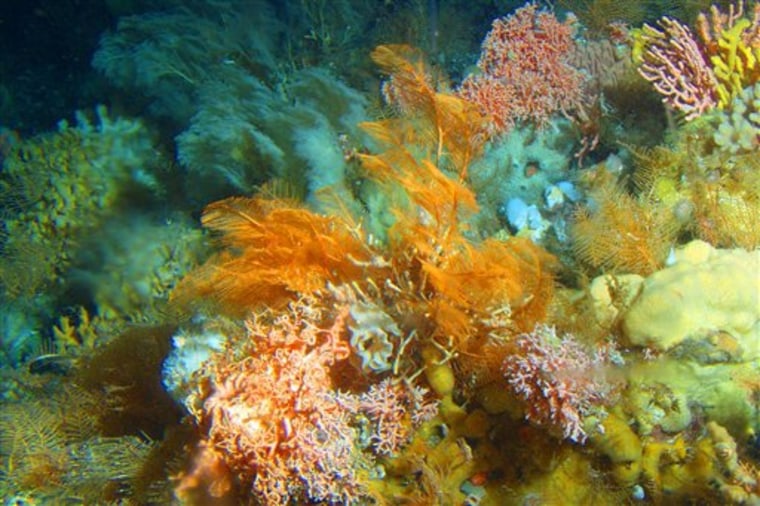An advisory fisheries panel voted Sunday to put 180,000 square miles of the northern Bering Sea off-limits to bottom trawling, a form of fishing conservation groups say is destructive to vulnerable habitat for numerous species.
The North Pacific Fishery Management Council, which advises the federal government on fisheries in federal waters off Alaska, made its unanimous decision at a meeting in Sitka after asking the public to weigh in with options for about 330,000 square miles of the entire Bering Sea. Options adopted now go through the regulatory process with the National Marine Fisheries Service.
Representatives of conservation groups and Alaska's fishing industry hailed the decision, saying it contained options they had pushed.
"With global warming and a growing world population, oceans are under more stress than ever and it would be irresponsible to add a preventable manmade threat to the fragile northern Bering Sea ecosystem," said Susan Murray with the group Oceana. "This decision protects the walrus, spectacled eider and numerous other marine animals that rely on a healthy seafloor in order to live. It also helps protect the subsistence way of life for coastal villages."
Boundaries frozen
The action essentially freezes the existing boundaries for bottom trawling, which involves dragging large, weighted nets across the ocean floor to catch groundfish species. Bottom trawlers will be allowed to continue to work on about 150,000 square miles where they fish now.
"It's another precautionary step to make sure we have sustainable fisheries in Alaska," said David Benton, executive director of the Juneau-based Marine Conservation Alliance, an industry group. "The council did some things we think are real important."
Among them, the panel endorsed gear modifications to reduce effects on the seafloor. It gave the industry a year to complete ongoing work to that end. That should be enough time to resolve some technical problems with equipment on some vessels in the current fleet, according to Benton, whose organization represents 80 percent of the fisheries and processors working in the Bering Sea and Gulf of Alaska.
Research area created
Also included was the creation of a research area in the northern Bering Sea. It's an option favored by the fishing industry to run an experiment designed by the federal fisheries service to assess what areas need to be protected from bottom trawling, such as sections with marine mammals or juvenile crabs.
The area will remain closed during development of a plan to be reviewed by the council and implemented within two years of final action being taken.
"We're very supportive of developing a cooperative research plan," Benton said. "We think it will provide opportunities for the industry, the coastal communities and NMFS to work together to make sure fisheries are sustainable and conducted in a way that does not cause conservation problems for seabirds, marine mammals or endangered species."
The northern Bering Sea shelf is critical habitat for scores of animals, including endangered spectacled eiders, which feed on clams and other small animals that live on the sea floor, according to Oceana. Gray whales and endangered bowhead and humpback whales also make their annual migrations through the Bering Sea.
"The research area would allow the council to gather the science to determine whether there are areas that could be opened to bottom trawling in the future," Murray said.
